Welcome to #WineWednesday Wordologie, my dears! If you’ve been keeping up with the site {well you have been visiting regularly, haven’t you?!} you already know I introduced this new series a couple of weeks ago in an effort to help us all get more comfortable in our champagne knowledge by increasing our effervescent vocabulary. If you need to do a little catching up be sure to check out the previous posts here and here.
Before we dive into this week’s vocab word, an interesting this happened to me this week: I realized, with regards to these vocabulary “lessons” I’m dishing out, that it’s important to me to be a good “teacher.” That means I care whether or not you, the Bubb readers, actually learn these words {insert collective “ahhh!” here, ha}. On that note, I thought it would be a fun idea to treat these vocab posts just like we used to treat vocabulary lessons when we were in primary school. Come on, you remember the technique: (1) look at the word; (2) read the definition out loud; (3) then use the word in a sentence to reinforce the knowledge.
Okay, so perhaps using the word in a sentence might not quite be helpful since there’s probably not a context in which you can just randomly use it {but hey, if you’ve got “Balthazar” money, by all means feel free to use it in a sentence by ordering it!}. However, what you can do to reinforce the knowledge is to put the word to practical application. Here’s my idea/suggestion on how to do that: the next time you go out to eat, ask for the wine list. See if the selected vocab words is on the list. If it is you can learn more about it by reading the wine’s description and/or asking the waiter or Sommelier to tell you about the wine. And just like that, you will have reinforced that new bubbly info in your lovely little brain.
So, ready for this week’s word? Here we go!
If you’ve ever been searching on the sparkling wine aisle trying to decide which bubbly you want to sip you may have seen the word “crémant” on the label. As my definition flashcard outlines, crémant indicates that it’s a French sparkling wine made in the méthode champenoise style. Why should we care? Because it indicates the kind of sipping experience we might expect. And we likey having an idea of the drinking experience we can expect. Let’s break it down a bit further, shall we?
Why is it “sparkling wine” and not champagne?
In short, all champagne is sparkling wine, but not all sparkling wine is champagne. Ultimately, the difference between the champagne and sparkling wine comes down to technique; traditions; and terroir.
- Technique: champagne is made in the méthode champenoise style. See the next section below for more details.
- Traditions: champagne production has a long, storied history and it’s production is almost always connected to a family or closely held coop of growers and wine makers who have been making sparkling wine in a specific style for generations.
- Terroir: Sparkling wine can be made anywhere in the world like Italy, Spain, and California, but champagne only comes from the Champagne region of France. This means that even if a sparkling wine is made in France, if it doesn’t come from the Champagne region of France it ain’t champagne, my dear. The region has unique, chalky soil and that is what contributes to champagne’s distinct flavor profile.
What does “méthode champenoise” mean?
Méthode champenoise is a labor-intensive and costly process {with strict criteria, no less} where wine is required to undergo a secondary fermentation inside the bottle. This process is what creates the lush, tiny, effervescent bubbles that champagne is renown for. All champagne and most high-quality sparkling wine is made using this process which is also known as méthode traditionnelle.
So what’s the deal with crémants then?
I developed a liking for crémants about 5 years ago when I was at a prix fixe dinner. I wanted to buy a bottle of bubbly without blowing out my bank account and I came across the Lucien Albrecht Blanc de Blanc Crémant on the wine list. I knew what “blanc de blanc” meant so I was highly intrigued. I decided to roll the dice and order the bottle. The first sip had nice, creamy bubbles with apple and soft citrus aromas, with both of those flavors following through on the palate. Although it didn’t quite have all the characteristics and full elegance of French champagne let me just say that I’ve been drinking Lucien Albrecht {about $18} ever since that night. I’ve also delved into other crémants as well and I’ve been quite happy with my discoveries.
What all this means in the final analysis is that seeing the word “crémant” on the label tells you that you are getting a sparkler from France made in the champagne style, therefore it will possess many of the desirable qualities that good champagne is so highly regarded for. So, if you want a good quality, French sparkler with a bit lower price tag, crémant is the way to go.
So that’s it for this week #WineWednesday Wordologie! And in an effort to totally educate you my dears, instead of moving on to a “D” vocab word next week I’ve decided to hang out in the “C” zone for a minute. There are a couple of additional sparkling wine types/styles “C” terms and, since we’ve talked about 1 style already this week, discussing these other 2 related terms will help begin to bring it all together when it comes to selecting types of sparkling wine by the info on the label.
Hopefully you’re feeling more wine wise already! Just stick with me–you’ll be shopping that champagne & sparkling wine aisle with confidence in no time at all.
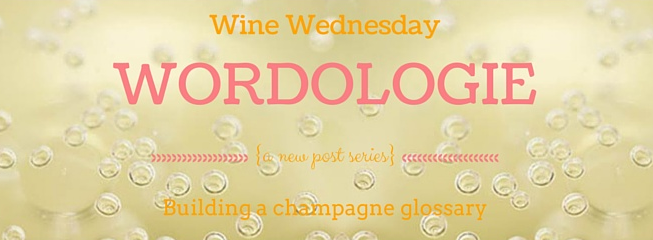
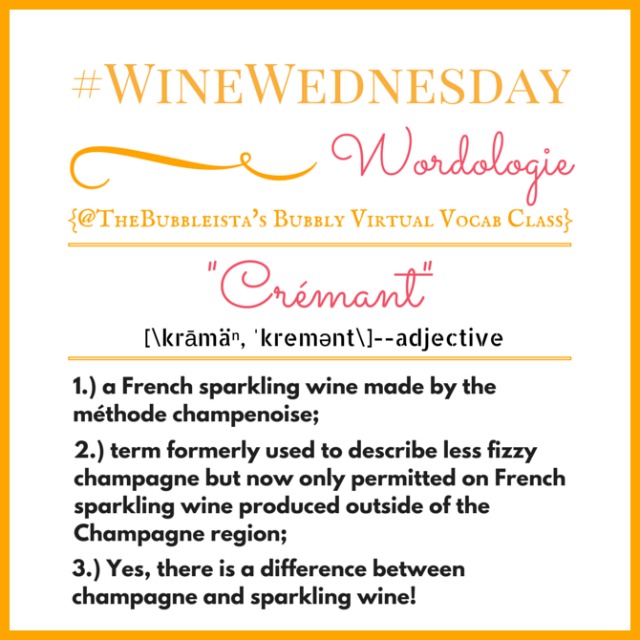

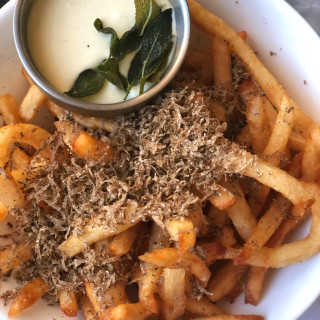
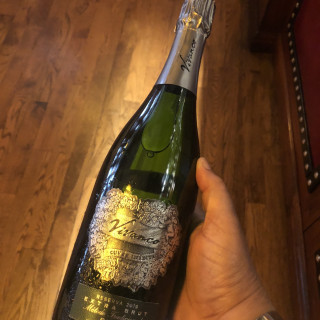
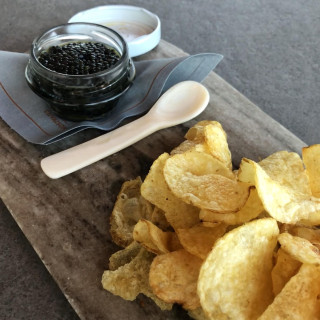
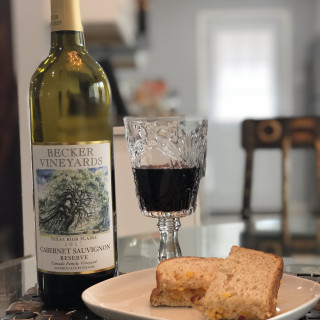

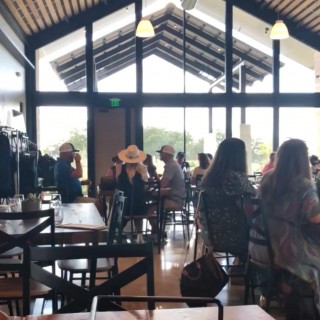
[…] Wednesday, and that means time for another #WineWednesday Wordologie, my dears! Last week’s #Wordologie edition found us delving into “C” vocab territory and, as I mentioned then, I decided […]